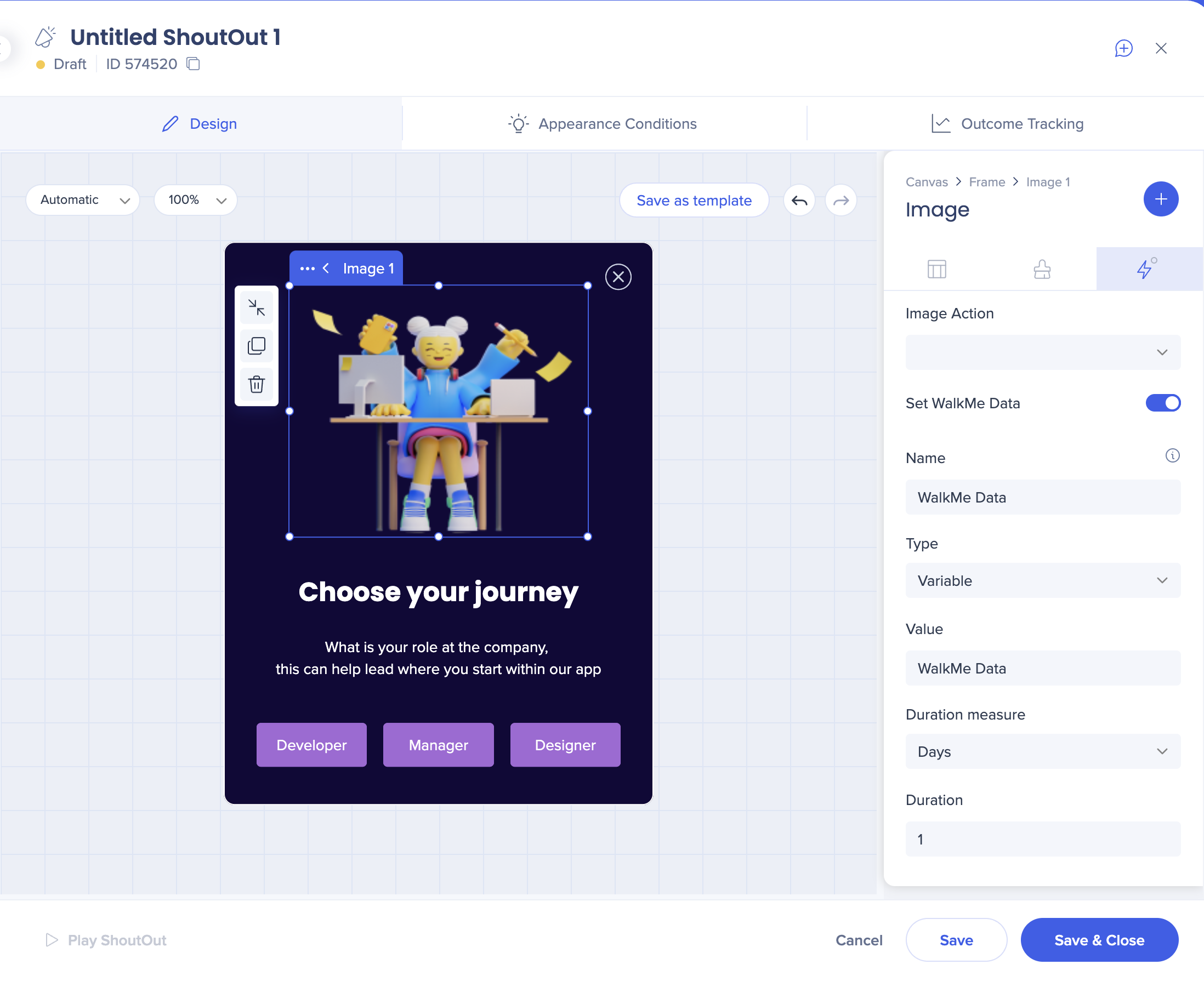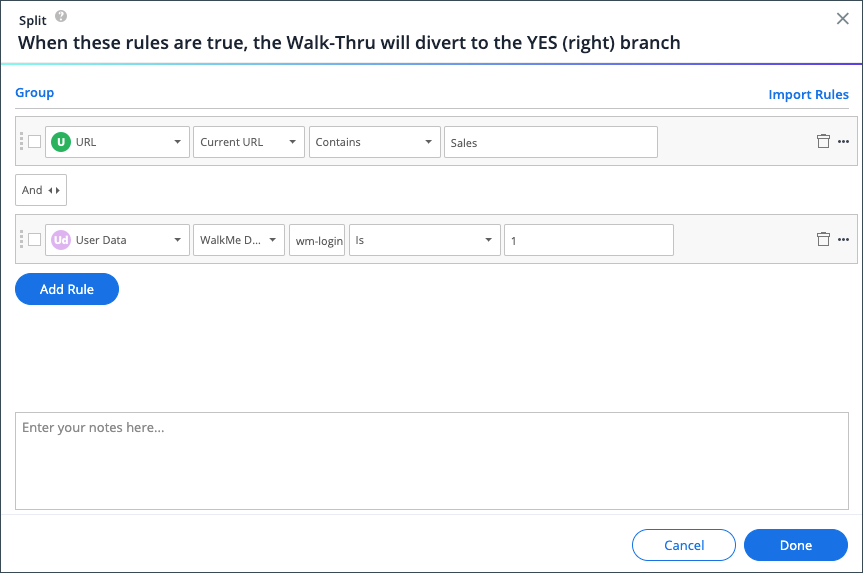Welcome to the
WalkMe Help Center
Please log in to continue

Please log in to continue

WalkMe Data lets you store information about user activity in the browser. This can include when a user selects an item, lands on a page, or completes a specific action.
You can then use this information in the Rule Engine to segment content, trigger Auto Plays, or personalize user experiences.
By using WalkMe Data, you can create more dynamic and responsive guidance. For example, you could track the number of visits a user makes to your site and display a ShoutOut on their third visit if they haven't completed onboarding yet.
WalkMe Data helps tailor user experiences by recording browser-based activity. You can use it to:
WalkMe Data acts like a browser cookie. Each data item includes a name (key), value, and duration, and it can be referenced later by WalkMe.
You can use rules to check whether a WalkMe Data key exists or has a specific value, and trigger different actions as a result.
WalkMe Data can be created or updated from different WalkMe items, depending on your build needs.
Each method stores data locally in the browser and can later be used in the Rule Engine to segment users, branch flows, or trigger content.
Learn how to test for the presence or value of WalkMe Data in the Rule Engine to trigger logic, show content, or branch flows.
To build a rule using WalkMe Data:

For example, a rule could state: “WalkMe Data value equals 3” to trigger content after three visits.
You can set WalkMe Data directly from a Smart Walk-Thru by adding a Set WalkMe Data step.
This step stores data based on the user's action and lets you trigger follow-up content or resume a Smart Walk-Thru later.
You can also set WalkMe Data from the Visual Designer when configuring a ShoutOut.
This allows WalkMe to track when users interact with a ShoutOut and use that data in rules or segmentation.

To track how often a user performs the same action, use multiple WalkMe Data steps with the same key:

Continue increasing the value by one each time the action repeats to track multiple attempts or completions.
Avoid using Incognito or private browsing when testing WalkMe Data, since cookies won't persist after the session ends.
For testing, use short durations such as a few minutes to confirm that data updates correctly. Once verified, update to the intended duration.
Use Flow Tracker to confirm that the WalkMe Data step triggered and saved correctly.
WalkMe Data can be set only for ShoutOuts created with dynamic layout. Classic layouts do not support this functionality.
If server storage is enabled and the expiry time is set to less than one hour, data will not be sent to WalkMe's servers.